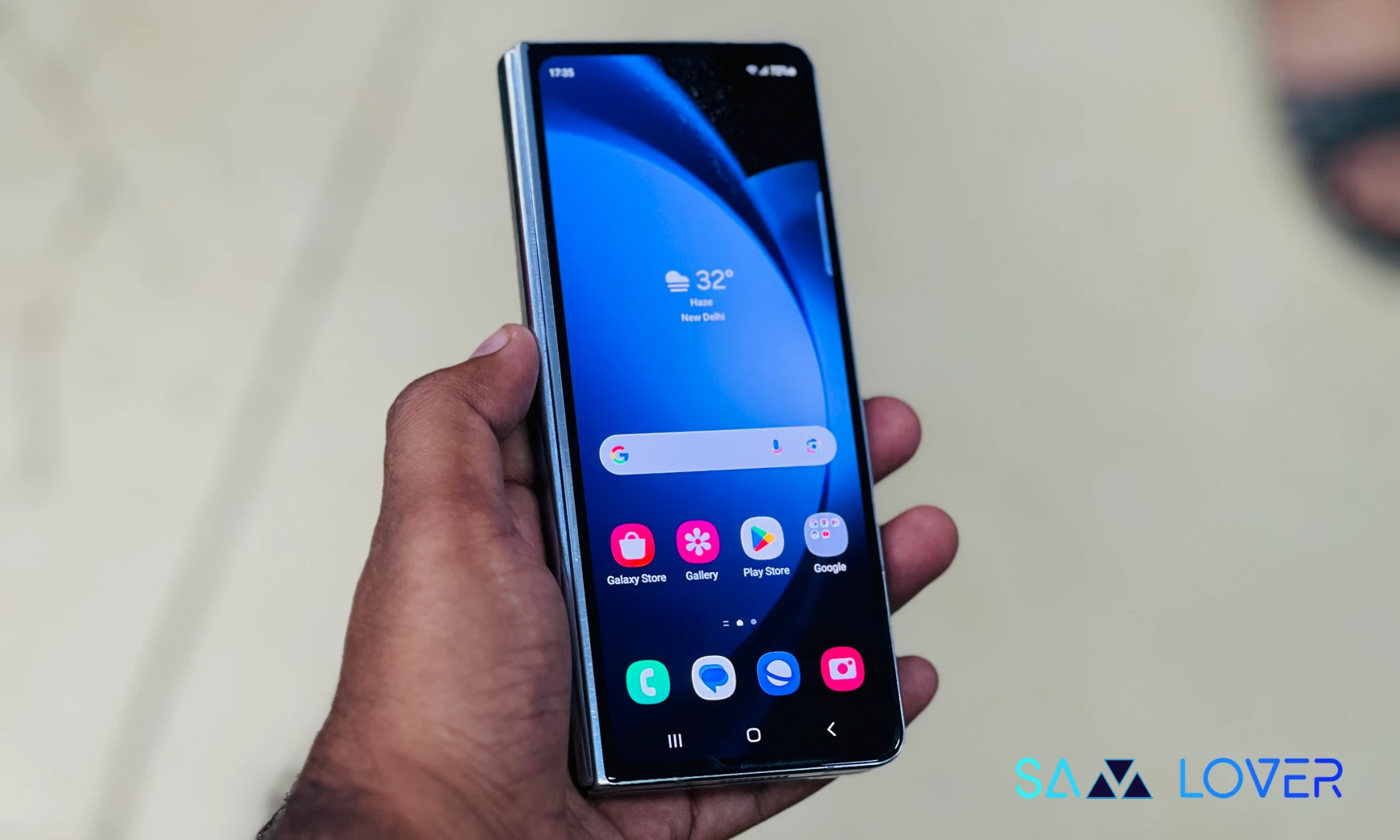Phone
Galaxy S25 to Retain Same Battery Capacity as Previous Models

Even though 2025 is still half a year away, Samsung has already begun preparing for the launch of its next flagship device, the Galaxy S25, in early 2025. The upcoming Galaxy S25 is expected not to get a bigger battery.
Even before any official announcement and launch of the Galaxy S25, leaks and rumors are blowing in the market. Now the new report says that Samsung will not offer major battery upgrades for the Galaxy S25. The statistic bar of the battery ratio in the Galaxy S-series shakes usually since the Galaxy S22 features 3700 mAh, the Galaxy S23 has 3900 mAh, and the recently launched Galaxy S24 has 4000 mAh.
Now the brand is looking forward to debuting its next-generation Galaxy S25, and reports are saying that it will not bring any battery upgrades. Reports suggest that the standard Samsung Galaxy S25 with the model number SM-S931 will have a similar battery power of around 4000 mAh as its predecessor series.
The Korean giant has already secured the name for the upcoming model “Galaxy S25” in Mexico, suggesting a launch in 2025. This appears to be a recent pre-registration device name trend for the giant well before launch. Recently, the brand registered the names of the Samsung Galaxy Z Fold 6 and Galaxy Z Fold 7. However, the latter is not expected until next year, just like the Galaxy S25.
However, securing the Galaxy S25 trademark doesn’t exactly guarantee that the series will last for two years. Meanwhile, the Koran giant could intend to continue the successful S-series, but pre-registering a name doesn’t confirm long-term plans.
Follow Sam Lover on Your Favorite Social Media Platforms
Phone
Samsung to depend on Snapdragon completely for Entire Lineup of Galaxy S25 series

Samsung’s next-generation Galaxy S25 series is supposed to be scheduled for early 2025. The giant is expected to power the entire series with one processor, the Snapdragon 8 Gen 4.
Samsung has already done this with the Galaxy S23 series, which was entirely based on Qualcomm’s Snapdragon 8 Gen 2. Now again, for the upcoming Galaxy S25 series, the Korean giant could completely depend on Qualcomm’s latest Snapdragon 8 Gen 4.
According to a tipster on X, Samsung might exclusively use a Snapdragon SoC in the Galaxy S25 series. The Snapdragon chipset powers the recently launched Galaxy S24 series’ Ultra variant, but the rest of the Galaxy S24 and Galaxy S24 Plus use Exynos in particular markets, including Europe, Africa, and Asian markets.
Qualcomm’s share in the Galaxy S24 series is nearly 40%, and the rest of the 60% goes to Exynos. Given a lower-than-expected 3nm yield, Samsung hardly brings the Exynos 2500 processor. It comes as a quite surprising development for Galaxy fans. The tipster mentioned that Qualcomm will likely be the sole SoC supplier for the Samsung Galaxy S25 (vs. 40% for the S24), as the Exynos 2500 may not ship due to Samsung’s lower-than-expected 3nm yield.
If the report is to be believed, regardless of specific regional markets, the upcoming Galaxy S25 will potentially use Qualcomm’s Snapdragon 8 gen 4 due to the doubt about Exynos’ situation. However, the Snapdragon 8 Gen 4 likely raises expenses by up to 25–30% because of a new high-end CPU design and a cutting-edge manufacturing process by TSMC.
Follow Sam Lover on Your Favorite Social Media Platforms
Phone
Here’s the notable changes of Galaxy Z Fold 5 to Galaxy Z Fold 6

Samsung is a few weeks away from launching its sixth-generation foldable phone, the Galaxy Z Fold 6, at the next Galaxy Unpacked event. To calm your curiosity, let’s take a closer look at the changes the Galaxy Z Fold 6 will bring as compared to its predecessor, the Galaxy Z Fold 5.
The Galaxy Z Fold 6 will share the floor with its sibling, the Galaxy Z Flip 6, on July 10, 2024. On the comparison side, the brand introduced the Galaxy Z Fold 5 on July 26, 2024. The Korean giant believes in offering upgraded key specs to each device as per the time. This time also, the Galaxy Z Fold 6 will bring upgraded specs, just like the Galaxy Z Fold 5’s upgraded specs.
These changes will see in Galaxy Z Fold 6
One of the notable changes the Galaxy Z Fold 6 will bring in comparison to the Galaxy Z Fold 5 is the processor. The upcoming foldable will be powered by the Snapdragon 8 Gen 3, whereas its predecessor is powered by the Snapdragon 8 Gen 2. Another change will appear in the display resolution. The recent Galaxy Z Fold 5 has an 1812 x 2176 pixels resolution. The upcoming Galaxy Z Fold 6 could boast an 1856 x 2160 pixel resolution.
The latest one is lighter as compared to the older one, as the Galaxy Z Fold 6 is expected to weigh 239 grams and the current Galaxy Z Fold 5 weighs 253 grams. The next change will appear in the OS version of both the foldable Galaxy Z Fold 6, which will run Android 14 out of the box, whereas the Galaxy Z Fold 5 will arrive with Android 13 out of the box.
The dimensions are also different between the Galaxy Z Fold 6’s dimensions when folded: 153.5 x 68.1 x 12.1 mm and 153.5 x 132.6 x 5.6 mm when unfolded. On the other side, the Galaxy Z Fold 5 measures 154.9 x 67.1 x 13.4 mm while folded and 154.9 x 129.9 x 6.1 mm when unfolded.
Follow Sam Lover on Your Favorite Social Media Platforms
News
Samsung Galaxy S25’s advanced AI novelties could boost its price

Samsung started working on the Galaxy S25 series, which is supposed to be launched early next year. This forthcoming device is expected to be priced higher as compared to its predecessor.
Samsung will expand its high-end S series by introducing a next-gen smartphone series named the Galaxy S25. It’s too early to discuss the Galaxy S25, but leaks and rumors are doing their jobs by offering more details about the upcoming Galaxy S25. This upcoming device is expected to cost more than the current S-series devices.
The reason behind this report appears to be that a Galaxy S25 will be more expensive than a Galaxy S24 due to its higher manufacturing costs. The US chip designer Qualcomm could push the upcoming Snapdragon 8 Gen 4 into production in the second half of the year. This latest chipset is expected to boost AI processing.
Snapdragon 8 Gen 4 will be a truly advanced chip, but its high-end tech advancements might lead to higher costs, which could translate into a price hike for the upcoming Galaxy S25. The report suggested that, according to a recent prediction from industry watcher Ming-Chi Kuo, Qualcomm might increase the cost of the Snapdragon 8 Gen 4 by 25–30% compared to the Gen 3 solution.
The Snapdragon 8 Gen 4 will be manufactured on the 3nm N3E process by TSMC; it’s the same technique used to build Apple’s A18 Pro chip. This shift will supposedly cause the Snapdragon 8 Gen 4 to be 25–30% more expensive than its predecessor. Snapdragon 8 Gen 3 costs around $190–$200; by this metric, the upcoming Snapdragon 8 Gen 4 might cost $260.
However, Samsung could deal with the higher expenses of the Snapdragon 8 Gen 4 for the Galaxy S25 by absorbing the cost or reducing the quality in other areas, such as the battery or display, but this could be risky, such as switching to its in-house Exynos 2500 chip. The upcoming chipset will be fabricated from TSMC’s most advanced process and should bring performance gains to the CPU, GPU, and NPU (AI processing).
Follow Sam Lover on Your Favorite Social Media Platforms










